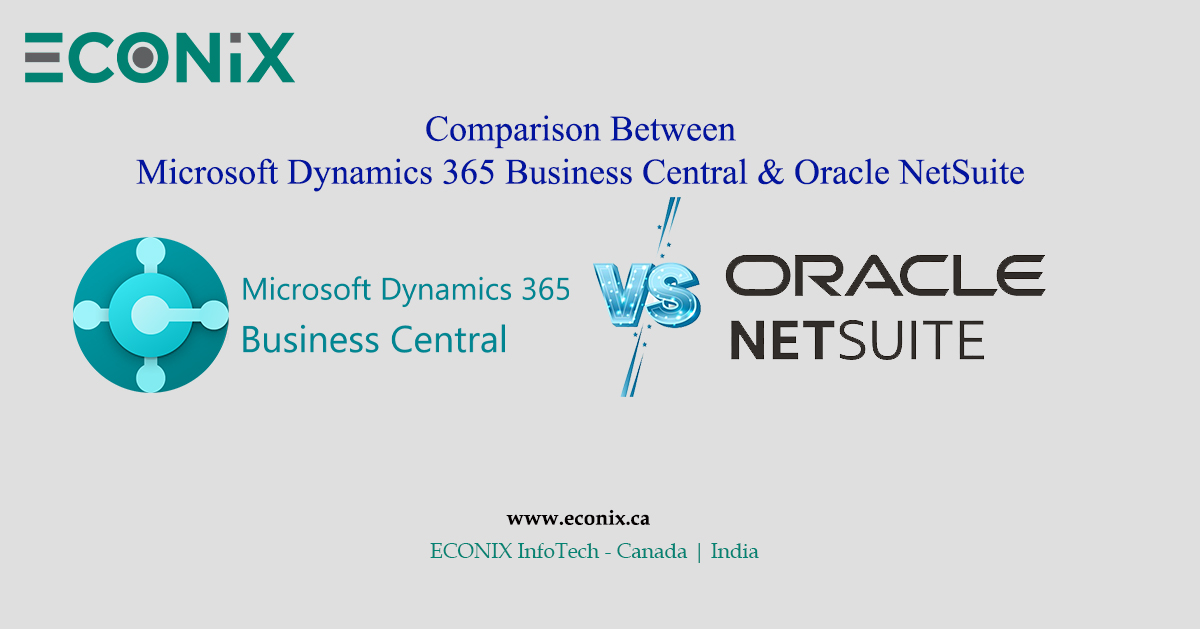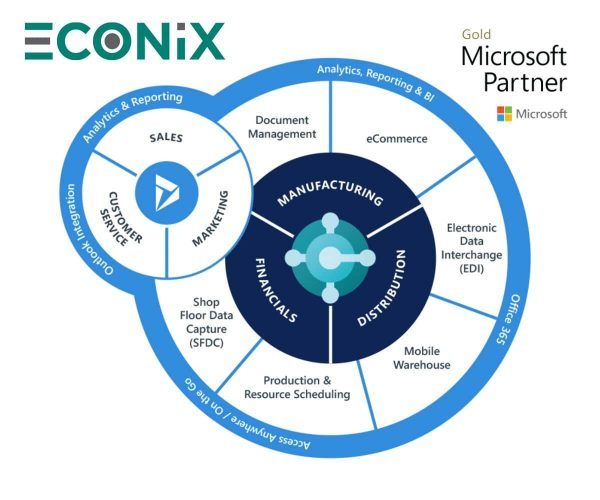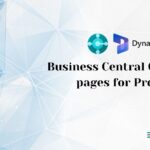Enterprise resource planning (ERP) is used to manage and integrate financial, process, supply chain, reporting, HR, and other activities. ERP solutions are a large investment for any company. Therefore, it is crucial to do thorough research when selecting the best solution. It can be difficult to select the right ERP solution because of all the factors involved.
There are many ERP solutions and providers available to you today, so don’t be overwhelmed. This article will help you to make an informed decision between the two most popular cloud ERP solutions: NetSuite vs. Microsoft Dynamics 365 Business Central. This article compares the two options to help you choose which one is right for your business.
Which One Is Right for Your Company – Business Central vs NetSuite
NetSuite and Dynamics 365 Business Central, both cloud ERP solutions, are highly regarded. They share many functionalities. Although they share many of the same capabilities, there are some differences between them and their focus areas. These could be important depending on your business’s specific needs. Let’s look at NetSuite vs. Business Central to help you choose the best fit for your business.
Base Platform Overview – Business Central vs. NetSuite
Microsoft’s cloud-based Business Central gives small and mid-market businesses the CRM and ERP capabilities they need. While it can be used immediately, many Dynamics 365 Partners can help you tailor the solution to your specific business. The base package (Essentials) includes warehouse management and supply chain management. For advanced inventory management and manufacturing functionality, your company can upgrade to the Premium package.
Oracle NetSuite is a cloud ERP software designed for small to mid-sized businesses. It is intended to be used straight from the box. Its core ERP package provides deep accounting and financial functionality. It also includes order, purchase, and inventory management. You will need to pay additional fees for CRM, warehouse management or assembly, manufacturing, or demand planning.
Implementation – Business Central vs NetSuite
Oracle NetSuite may take longer if your company requires extensive customizations. NetSuite implementation takes on average between two and six months. However, the length of implementation depends on the business’s needs and complexity. Its interface is not as intuitive as it should be and users often need to learn how to use it effectively.
Dynamics 365 Business Central can easily be deployed in a matter of weeks depending on your business needs. Business Central UI can be used in the same way as other Microsoft Office tools. This is a bonus for employees who are already familiar with Excel, Word, Outlook, and so on. Its intuitive design and ease-of-use often result in faster employee adoption, and less training time.
Pricing – Business Central vs NetSuite
Microsoft Business Central operates on a subscription model with the Essentials plan starting from $89.60 CAD/user/month ($70 US). For $10.20 CAD per month, you can also have “Team users”, which have full read functionality but limited writing permissions. This is $8 USD. For more details – https://dynamics.microsoft.com/en-us/pricing/
NetSuite pricing can be confusing. You will usually need to speak with a salesperson before you determine the price. The monthly cost is $999, with $99 USD for each additional user.
Microsoft Dynamics 365 Business Central ERP Demo
Consultation with Microsoft Gold Partner
Customization & Integrations- Business Central vs NetSuite
Business Central makes it easy to add extensions that enhance functionality, modify behavior or offer access new online services. App development is easy with little to no code. This was the main purpose of Business Central. Microsoft AppSource makes it easy to add both free and paid addons. You can also make modifications and personalize your solution using a drag and drop editor. Visual Studio can make more complicated changes. Dynamics 365 Business Central integrates with many other Microsoft apps, including Power Platform Excel, Dynamics 365 CRM, Teams, Outlook and Excel. It was created for integration. This makes it easier to connect it with third-party solutions and increase your capabilities as you grow or evolve your business.
NetSuite provides the same level of customization as Business Central via its SuiteCloud platform. SuiteCloud, lets users personalize their dashboards and feeds, create custom applications and add third party solutions through SuiteApp.com. NetSuite is also connected to SAP and Google Apps. Pricing and licensing are what make customization different.
Reporting- Business Central vs. NetSuite
Business Central has unlimited controls and dimensions to measure. This makes it easy to drill down quickly for more detail information. Drag-and-drop interface allows non-technical users create reports quickly and easily without the need to code. Power BI is a powerful data visualization and analytics tool that companies love to include in their Business Central solution. Power BI Pro licenses are available at an additional $12.20 CAD per user, per month ($10 USD).
NetSuite provides deep reporting and analytics right out of the gate. Users can also create reports using the drag and drop report builder. The data can be analyzed in just three dimensions. Users might need to look at different screens to see more details. Power BI is also available for integration.
Upgrades- Business Central vs. NetSuite
Dynamics 365 is a single-tenant system. The clients are not required to agree to all updates. Updates can be checked in the staging environment prior to going live in production. This is to ensure that there are not unwelcome business consequences. NetSuite, on the other hand, has a multi-tenant architecture, meaning that clients must install each update regardless of whether they are used for business purposes.
Final Thoughts- Business Central vs NetSuite
Oracle NetSuite and Dynamics 365 Business Central both offer a variety of additional functionality that users may add to the core product according to their business needs. NetSuite offers a suite of modules designed to meet the needs of your entire business. Additional functionality can be purchased, but they may not work with third-party software. Business Central, however, is an enterprise-level system that is easier to use and more affordable. And it scales well as your business grows. The pricing might be more attractive for small- and medium-sized companies.
| Dynamics 365 Business Central vs. NetSuite Features Comparison Chart | ||
| Features Comparison | Dynamics 365 Business Central | NetSuite |
| Core Financial Capabilities (GL, AP, AR, BR) | Included | Included |
| Multi-Budgets, Currencies, Fixed assets, Distribution, Manufacturing, Job Costing | Included | Al La Carte Pricing |
| Modern Interface | Included | Not Included |
| Users Can Personalize All Windows | Included | Not Included |
| Number of Included Upgrades per Year | 2 | 2 |
| Recommended Company Annual Revenue | $1-999M | $1M-500M |
| Quick speeds on loading records, scrolling through pages | Advanced | Basic, Delayed |
| Low Monthly Pricing | Low per user, per month, no commitment | Annual Commitment, Base Pricing, per User Pricing< |
| Multi-Currency, Multi-Language | Included | Included |
| Report Writer | SQL Reporting Services (SSRS), Word, Power BI, Excel | Netsuite Reports |
| Ease of integration (open API, ODBC, Azure, Rest API, Power Apps) | Included | Need NS Adapter and Integration Team |
| Annual Commitment | Not Included | Included |
| Microsoft Single-Sign On | Included | Not Available, User Management in NS |
| Administer through Office 365 Admin Portal | Included | Not Available |
| Auto Save on Every Page (Save data after each keystroke) | Included | Not Included |
| Web, Mobile, App | Included | Included |
| Robust Artificial Intelligence and Inventory and Cash Flow Forecasting | Included | Not Included |
| Built-In OCR and Document Routing | Included | Not Included |
| Contact and Document View and Entry in Outlook | Included | Not Included |
| Fully Cloud (No Access to DB) | Included | Included |
| Robust Audit Trails (Change Tracking Logs) | Included | Not Included |
| Free Learning (Microsoft Learn) | Included | Not Available |
| Open, Robust Online Documentation | Included | Not Available |
| Automatic built-in Power BI Reports | Included< | Add-On, Need Connector |
| Integration with Outlook, Excel, Word | Included | Not Available |
| Available on-premise and cloud (SaaS) | Included | Not Available |
| ear Founded | 1982 | 1998 |
| Years of Foundation | 38 | 22 |
| Number of Companies | 167K+ | 40K+ |
| Base Price Per Month | Not Included | $999 |
| Additional Charges for multi-budgets, fixed assets, advanced billing, etc. | Everything Included | Al La Carte Pricing |
| Annual Maintenance Charges | None | 10% |
| Power Apps (Built Your Own Apps for BC) and Power Automate (Build Your Own Workflow and Data Flows) | Included | Not available |
| Edit in Excel, Publish in Excel | Available | Not Available |
| Advanced Manufacturing | Included | A La Carte or App |
| Sandbox/Dev Environments | 3 Included | A La Carte per environment pricing |
| Minimum User Requirements | 1 | Base Price, 3 |
| Maximum Users | No Limit | No Limit |
| Automatic Upgrades | Included | Included |
| SIFT: Sum Index Flow Technology. Balances are read of indexes, not maintained balances in dedicated tables | Included | Not Included |
| Ability to preview upgrade and postpone up to 30 days | Included | Not Available |
Table Credit source – https://www.shannonmullinsmsft.com/2020/09/business-central-versus-netsuite-side.html






